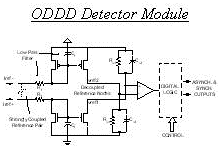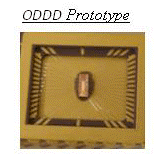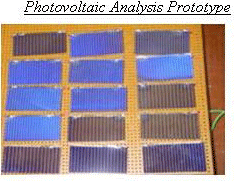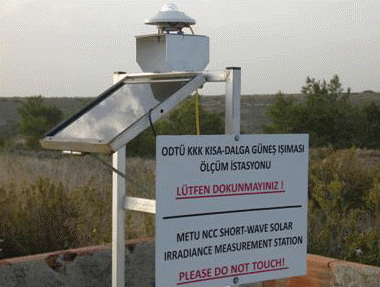Araştırma- Ali Muhtaroğlu
Integrated Circuit (IC) Design: Power Delivery, Mixed Signal Testability, High Volume Manufacturing (HVM), Low Power Design

Understanding the supply fluctuations (right) of various frequency harmonics is essential to maximizing performance. Conventional methods for analog validation of the power delivery system have problems with accuracy, reference generation and distribution, supply noise assumptions or automation readiness. To address the above issues, an On-Die Droop Detector (ODDD) , a scalable mixed signal IC solution, has been implemented, and validated for analog sensing of differential high bandwidth supply noise.
Traditional AC or DC parametric testing of highspeed I/O signals during validation or HVM is either not accurate enough, or requires expensive test equipment with associated test time penalty during production. An advanced AC I/O Loop Back (IOLB) mixed signal testability feature has been designed and implemented for high speed accurate AC testing of the I/Os. Another feature, selfleakage DFT , enables unconnected pin leakage tests. Such features allow “selftesting” of I/O health during production, and address the problem of high test cost and tester inaccuracy.
Designing ICs at low power is essential to continue to add features, and keep Moore’s Law on track. Low power design has been demonstrated (30% power reduction) on a microprocessor at architectural, circuit, and device levels. Some of the fullchip analysis depended on temperature and current distributions as observed in the figures.
Energy Systems: Renewable Sources and Energy Scavenging Sustainable power management of microelectronic systems requires that energy scavenging features are considered as part of the system design in order to take advantage of renewable resources in the vicinity. A holistic approach is needed, utilizing photovoltaic, thermal, and vibrational sources of energy to minimize power consumption off the system AC plug, or the battery.
Power architecture needs to be modified , integrating low voltage capable, and efficient power electronics circuits into the system Hybrid thermoelectric conversion (HTC) has been used as a means to improve the efficiency of high performance mobile computing systems. HTC utilizes the thermal margin in the cooling solution, when the electronic component is not fully active, to integrate a thermoelectric (TE) module
into the heat dissipation path for energy scavenging. When the component is driven to its junction temperature limit through a heavy workload, the same TE module is switched to refrigeration mode to provide additional cooling headroom for improved performance. A set of semirealistic system usage assumptions and parameters has been utilized for the evaluation of HTC in system environments. Results from finiteelement analysis (FEA) simulation of the topology and off the shelf TE characterization plugged into a custom built iterative system solver estimate up to 10% system efficiency (as measured in thermal power capacity over average power consumption) improvement potential.
In another study , prototypes were built to empirically evaluate the potential of adding a photovoltaic panel to the notebook computer lid using the state of the art PV technologies, and projecting findings to the improved technologies in research. The results indicate a strong dependence of expected battery life benefits on the environmental conditions, as expected. Based on the used models, up to 5% to 25% benefit can be expected from various technologies in well illuminated conditions and executing average workloads. There is no doubt that more sophisticated system models are needed to enable sensitivity studies for sustainable power management.
The selfpowered solar radiation measurement system designed and built on campus (right) through inderdisciplinary collaboration within Renewable Energy Design and Applications Research (REDAR) group supports the ongoing empirically based system studies.
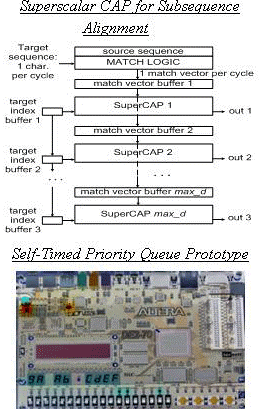
Computer Architecture: Low Power and High Performance Architectures Energy and power optimizations need to be done not only at materials and circuit design level, but at architectural abstraction level as well4,5. Careful architectural design of digital systems plays an important role in enabling automation of mixed signal features1,2. Our additional interest lies in parameterized architectures, delivered through high level hardware description languages like VHDL, which are suitable for Cellular Automaton Processors(CAP). The subsequence alignment problem was solved through such a high performance superscalar architecture . On a follow up work, a simple selftimed priority queue was developed to report results from the subsequence alignment machine, and was implemented on a FPGA prototyping board. The ongoing research in this area is focused on delivering low power specialized and general purpose computing architectures for digital processing at low energy cost, such as maximum power point tracking hardware utilized in energy scavenging applications.
1 A. Muhtaroglu, G. Taylor, T. Rahal-Arabi, “On-die droop detector for analog sensing of power supply noise”, IEEE Journal of Solid-State Circuits, Vol. 39, No. 4, pp. 651-660, April 2004.
2Provost, T. Huang, C.H. Lim, K. Tian, M. Bashir, M. Atha, A. Muhtaroglu, C. Zhao, H. Muljono, “AC IO loopback design for high speed microprocessor IO test”, IEEE International Test Conference Proceedings, pp. 23-30, October 2004.
3A. Muhtaroglu, B. Provost, T. Rahal-Arabi, G. Taylor, “I/O selfleakage test”, IEEE International Test Conference Proceedings, pp. 903-906, October 2004.
4T. Rahal-Arabi, A. Muhtaroglu, G. Taylor, “Designing for Low Power”, IEEE Electrical Performance of Electronic Packaging (EPEP) Proceedings, pp. 3-6, October 2006.
5A. Muhtaroglu, A. Yokochi, A. von Jouanne, “A Sustainable Power Architecture for Mobile Computing Systems”, Journal of Power Sources, Vol. 178, No. 1, pp. 467-475, March 2008.
6A. Muhtaroglu, A. von Jouanne, A. Yokochi, “Hybrid Thermoelectric Conversion for Enhanced Efficiency in Mobile Platforms”, Journal of Micromechanics and Microengineering, Vol. 17, No. 9, pp. 1767-1772, September 2007.
7A. Muhtaroglu, A. Yokochi, A. von Jouanne, “Integration of Thermoelectrics and Photovoltaics as Auxiliary Power Sources in Mobile Computing Applications”, Journal of Power Sources, Vol. 177, No. 1, pp. 239-246, February 2008.
8A. Muhtaroglu, “A Subsequence Alignment Implementation using Superscalar Cellular Automaton Processor System”, 5th Intl Symposium on Electrical and Computer Systems Proceedings (Gemkonağı-Lefke), November 2008.
9A. Muhtaroglu, Ö. B. Sezer, “A Simple Self Timed Implementation of a Priority Queue for Dictionary Search Problems”, IEEE International Conference on Adaptive Science and Technology Proceedings, December 2009.








